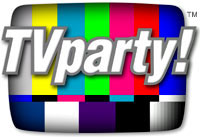
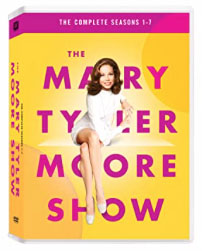
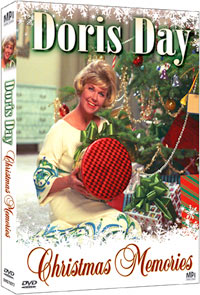
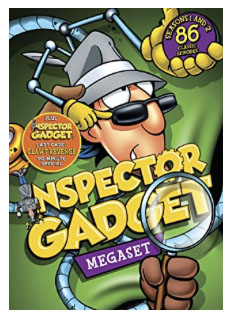
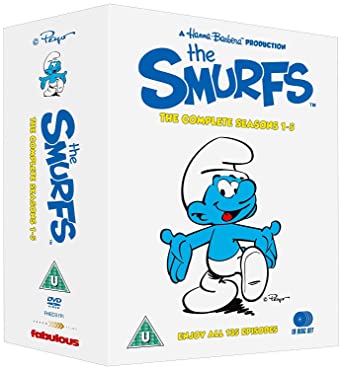
 |
 |
 |
 |
 |
|
|
What would TV history be without the laugh track? While much-maligned by television critics, the laugh track is, in fact, any true TVParty-er's best friend. Over the years, having watched rerun after rerun, we all have come to know and love those nameless laughers whose voices we recognize, and who can always be counted on to assure our amusement. Such classics as 'The Beverly Hillbillies', 'The Munsters' or even 'Bewitched' wouldn't be nearly as fun - and indeed, would be almost inconceivable - without the laugh track. Case in point: Cartoon Network's remastered versions of 'The Flintstones' omit the 1960s laugh track, and the jokes largely fall flat with a thud. But where did all of this merriment come from? Strangely, while everyone recognizes the presence of laugh tracks, very few industry sound engineers will discuss their work or even acknowledge this aspect of post-production. So here's the "unauthorized" history of the laugh track that I've been able to compile thus far. While most associate the laugh track with television, this innovation actually was used in radio during the later 1940s. While many radio shows were done before a studio audience, as the medium's popularity waned late in the decade, recorded laughter was used from time to time. After all, who would know?
THE LAUGH TRACK
The television laugh
track was introduced to viewing audiences in 1950 on NBC's 'The Hank
McCune Show'. The program itself appears to have been rather run-of-the-mill,
but in its review Variety noted the innovation: "there are chuckles and
yocks dubbed in. Whether this induces a jovial mood in home viewers is
still to be determined, but the practice may have unlimited possibilities
if it's spread to include canned peals of hilarity, thunderous ovations
and gasps of sympathy."
Invented by engineer
Charley Douglass, the laugh track went on to become a television staple
throughout the 1950s, whether providing the entire response track (as
in 'Topper' and 'Car 54, Where Are You?') or as a "sweetener"
for shows recorded before an audience but in need of enhanced audience
response.
Early uses of the
laugh track are quaint by today's standards: 'The
Adventures of Ozzie and Harriet' used only one laugh throughout
its half-hour running time, and 'The Abbott and Costello Show'
used an uproarious laugh track which ran continuously, regardless of the
action on screen. Even 'I Love Lucy''s sound engineer regularly
peppered many of the episodes with a handful of easy-to-recognize laughs.
As the 1960s approached,
most sitcoms increasingly relied on the laugh track. More and more motion
picture studios (particularly Columbia) began producing television shows,
and their soundstages simply were not equipped with studio-audience facilities.
Also, the sitcom trend began to border on "fantasy" subjects whose special
effects could not be achieved before a studio audience. Thus, the "golden
age" of the laugh track entered full swing.
Glen Glenn Sound had
refined the process, and their tracks and engineers dominated the industry
- which is why the very same laugh tracks can be heard on nearly every
sitcom of the era, regardless of production studio or network. While still
somewhat of an industry secret, here's how the process worked.
First, of course,
reactions were culled from studio audiences. Industry legend has it that
The Lucy Show and 'The
Red Skelton Show' were used most often - 'Lucy' for its uproarious
sight-gag reactions, and 'Red Skelton' because the weekly pantomime sequences
contained no dialogue.
Engineers looked for
reactions of all types which ended very cleanly and which were dominated
by one or two audience members; this made the process of patching them
together easier. Later in the decade, editing processes were refined so
that a distinctive laugh within a crowd could be brought to the surface
and even isolated over silence.
In addition, distinctive
whistling and sped-up applause
tracks were recorded in the mid- to later 1960s and used on nearly
every 1970s variety show discussed here on TVParty. All of these tracks
were then installed into a device known as, appropriately enough, a laugh
machine.
This 28-inch-high
apparatus resembles an organ, having 10 horizontal and four vertical keys
and a foot pedal. The engineer "orchestrates" the laugh track by using
the keyboard to select the type, sex, and age of the laugh, while playing
the foot pedal to determine each reaction's length.
Every few years, the
tracks were slightly changed and updated - new laughs added, others banished
forever, still others put "on hiatus" for a few years and revived later.
Thus, many sitcoms can be dated by listening to the laugh track - just
listen to the tracks on Mister Ed
(early 1960s) vs. those on Bewitched (mid-60s) vs. those on The
Partridge Family (early 1970s).
Interestingly, a few
all-time classic tracks recorded in the late 1950s and early 1960s were
never retired, and can still be heard on 'Frasier'! Today, these classic
laugh tracks most likely reside in the tape vaults of Todd-AO in Hollywood.
By the late 1970s,
the post-production industry apparently tired of the standard laugh track,
with its easy-to-recognize laughs heard throughout the 1960s and early
70s. More and more shows were returning to having a studio audience (thus
the familiar announcement over the credits: "'All in the Family' was taped
before a studio audience!"), which made the laugh track sound more artificial
than ever.
So, engineers devised
an entirely new track comprised of "looser", more relaxed group laughs;
these tracks can best be heard on The
Love Boat and Eight is Enough.
This trend in laugh tracks still prevails today.
The laugh machine
remains in use, but few "laugh men" (as they are known in the post-production
industry) have come forward to acknowledge or discuss their work. Some
of the legendary "laugh men" work at Sound One, a leading post-production
house in Los Angeles. And, with modern digital sound techniques, the patching
in of the laugh track is becoming harder to detect - but it's still there.
Meanwhile,
syndication of classic sitcoms perpetuates the familiar laughs we've come
to love as part of American television history. |
HISTORY OF THE LAUGH TRACK
"Ben Glenn II's "Short History of the Laugh Track" is a fine piece of work... just a couple of comments. I remember seeing a TV Guide article sometime in the 70s that dealt with the same subject matter. As I recall, they actually named the post-production company that was responsible for the standard TV laugh tracks of the day, and it WASN'T Glen Glenn Sound or Todd-A O... it was some different company with an obscure name that I no longer recall... and I didn't keep the article. (Not that they might not have been AFFILIATED with one of those firms, but I don't remember any mention of that.) Anybody else remember seeing that article? I remembered it because, like Mr.Glenn's, it described the laugh machine as resembling a keyboard instrument of sorts. Also... thank GOD I'm not the only person who actually came to RECOGNIZE all those laughs!! It's amazing how few people have ever been truly aware of such things.... The sounds literally go in one ear & out the other. Finally, one more observation. I recall that the networks themselves had their own distinctive laugh (and applause) tracks, specifically for programs produced in their own facilities. Most of the 60s/early 70s variety shows that were taped at NBC Burbank, like Flip Wilson, the short-lived Jerry Lewis show in '68, and (especially) Dean Martin, made extensive use of laugh & applause tracks that did NOT sound like the "standard" familiar ones. The old Peter Marshall/Paul Lynde et al. "Hollywood Squares" used it as well. The only major NBC variety show taped in Burbank that DIDN'T use it was "Laugh-In" - they used the standard Glen Glenn (or whoever it was) tracks. Ditto for CBS and any shows taped at Television City - Red Skelton, Carol Burnett (in the early years especially), the Smothers Brothers, even the first few years of "All In The Family" before they moved to Metromedia Square. Again, CBS's in-house laugh'n'applause tracks were distinctly different from the "standard," government-issue tracks on filmed shows-or from NBC's, for that matter. ABC, I believe, mostly used the "standard" tracks, though it's hard for me to say - we didn't have a primary ABC affiliate (i.e. a station that cleared more than just a few ABC programs) here in Springfield MO until at least 1969, so I saw relatively few ABC shows in the 60s except "Hollywood Palace" - and IT used the "standard" laugh tracks. Would anyone care to confirm (or deny!) any of these ramblings?" - Randy Stewart
TV
Blog / Television Blog / Christmas Blog / 2010
TV Shows / Classic
TV / DC
Comics on DVD / Batman TV Shows on DVD
Hit Shows of the Seventies: Hitchhiker's Guide to the Galaxy / Gene Roddenberry in the 1970s / Star Trek Animated / Fall Previews of the 70s / Lance Link, Secret Chimp / Star Wars Holiday Special / Alias Smith and Jones / 1977 Year in Review / Top Ten 1970-76 / The Rockford Files / All in the Family / Sam Hall (Dark Shadows) Interview / Actor Ed Nelson / Death of Archie / Battlestar Galactica / Wonder Woman / Network Jingles / Class of '74 / Happy Days / Good Times / Mr. Bill / Dinah! / Maude / Doris Day Show / Pamelyn Ferdin Interview / The Bicentennial Minute / Jingles & Catch Phrases of the 1970s / Early Cable TV 1970s / TV commercials for Women / TV Moms / Bette Midler in the 1970s / Biff Burger
|
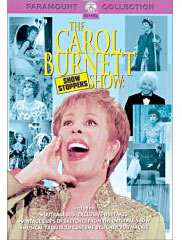 |
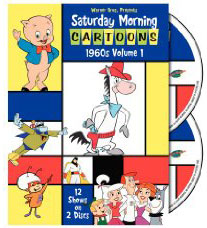 |
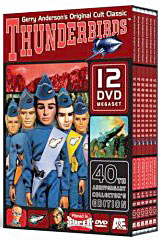 |
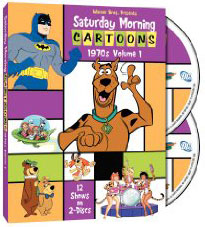 |
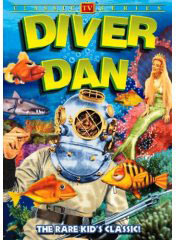 |
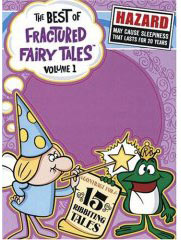 |
|
||||||||||||||